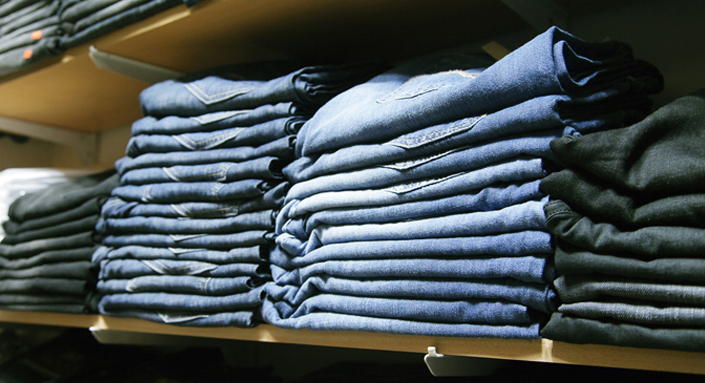
Source: fibre2fashion
The Indian denim-wear market is currently facing an oversupply situation in the aftermath of the capacity expansion post-2011, which in turn was due to lower incubation after the demand for denim fabric picked up as a result of a recovery in the country's economy. India is now being looked upon by a number of global denim manufacturers as an emerging export region, owing to its high availability of cotton, quality standards, cost-effectiveness, and a large pool of skilled workforce.
First, let's look at the elementary facts: the global market for denim is forecast by observers to top a phenomenal $64.1 billion in another four years. In this backdrop, the Indian denim industry too has shown continual growth over the years. Currently, the country has a denim manufacturing capacity of around 1.2 billion metres per annum operating at a utilisation level of about 80-85 per cent. Yet, despite the impressive numbers, the Indian denim manufacturing industry contributes a paltry 5 per cent to the global market, in essence reflecting the overall performance of the country's textiles industry. However, denim is the only segment in the Indian textiles industry that has the potential to grow manifold compared to others.
India is being looked upon by an increasing number of global denim manufacturers as an emerging denim export region, owing to its high availability of cotton, quality standards, cost-effectiveness, and a large pool of skilled workforce. Moreover, denim jeans manufacturing costs are substantially lower in India as compared to other developed/developing nations.
On the domestic front, the denimwear market is now being driven by a number of factors: favourable demographics, increasing disposable incomes, westernisation of work culture, and a rise in the popularity of denim jeans as business casualwear. And with unabated globalisation, young India prefers denim as part of essential dailywear. All these factors augur well for growth.
Current Indian denim market scenario
Currently, the Indian market is facing an oversupply situation, following the capacity expansion post-2011 due to lower incubation period after the demand for denim fabric picked up due to the recovery in the country's economy. The domestic denim industry has witnessed this cyclic phenomenon twice in the recent past-the first was the major downturn between 1998 and 2001 which was a result of the high capacity installation in China, followed by a period of rapid growth in demand in 2002-07. To cater to increasing demand, denim fabric producers built up on the existing capacity. However, post- 2008, domestic and export demand for denim fabric in India declined owing to the global economic meltdown, which in turn affected the utilisation rates of denim fabric manufacturers. With gradual recovery in the global economy and declining cost-competitiveness of China, the demand for denim fabric picked up after 2011, which then prompted players to again embark on capacity expansion.
But at present, many manufacturing units are unable to fully utilise their capacities, owing to oversupply in the market which in turn is having a negative impact on the operating margins of these players. The capacity addition has grown mostly in the bottom-most segment of the market, and the mills in the lowest business segment are gravely affected. The mills in the mid and high segments of the business have faced the lowest impact of this situation.
Moreover, the current annual consumption of denim jeans in India is only 453 million pairs. The average per capita consumption is a minuscule 0.3 pairs-significantly less compared to the corresponding numbers in China and the US, where the average per capita consumption figures are 1.0 and 8.0 respectively. However, the per capita consumption is expected to increase to 1.0, owing to growing disposable income, favourable demographics, and increasing penetration in rural markets. The sky, therefore, is the limit on this count.
